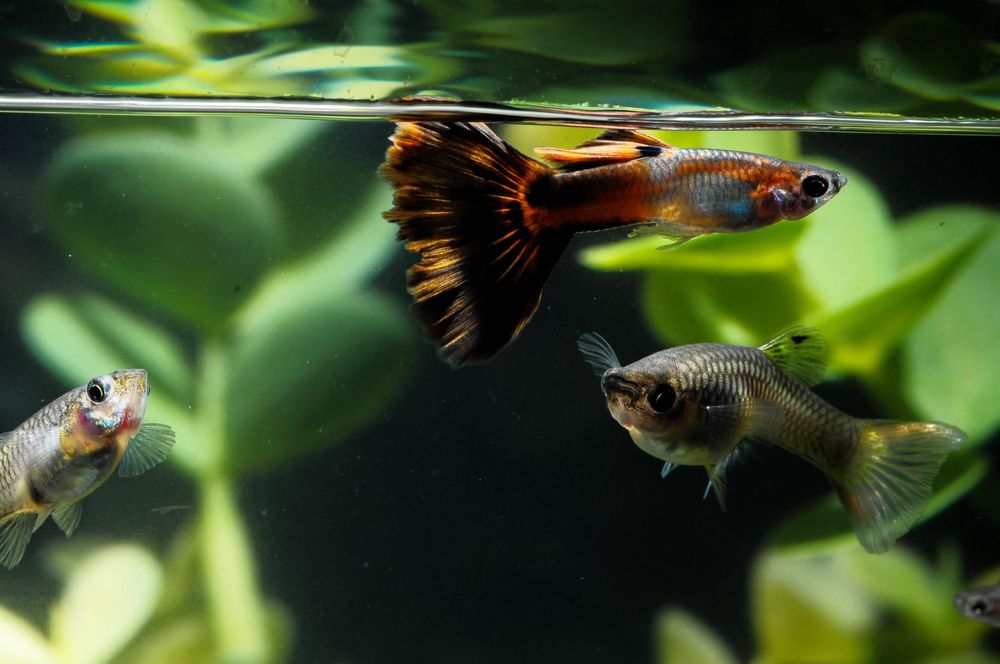Cycling A New Aquarium

Cycling an aquarium is a crucial step in setting up a healthy environment for your fish and other aquatic inhabitants. The process involves establishing beneficial bacteria that break down harmful waste products (ammonia and nitrite) into less harmful nitrate. Here are some popular methods to cycle an aquarium:
1. Fishless Cycling with Ammonia #
Step-by-Step:
- Set Up Your Tank: Fill your tank with dechlorinated water and set up all equipment (filter, heater, etc.).
- Add Ammonia: Add pure ammonia (without additives) to the tank to reach a concentration of 2-4 ppm (parts per million).
- Test Water Regularly: Use a test kit to monitor ammonia, nitrite, and nitrate levels.
- Wait for Nitrite Spike: Initially, ammonia levels will rise, then nitrites will appear and spike.
- Wait for Nitrite Drop: As beneficial bacteria establish, nitrite levels will start to drop and nitrates will appear.
- Confirm Completion: The cycle is complete when ammonia and nitrite levels are zero, and nitrate levels are present. This process typically takes 4-6 weeks.
Pros: Safe for fish, controlled ammonia levels. Cons: Requires patience and regular testing.
Useful products #
2. Cycling with Fish #
Step-by-Step:
- Choose Hardy Fish: Select a few hardy fish that can tolerate higher levels of ammonia and nitrite, such as zebra danios or goldfish.
- Introduce Fish Gradually: Add fish to the tank slowly to avoid overwhelming the system.
- Monitor Water Parameters: Test water daily for ammonia, nitrite, and nitrate levels.
- Perform Frequent Water Changes: Change 10-20% of the water every few days to keep ammonia and nitrite levels in check.
- Complete the Cycle: The cycle is complete when ammonia and nitrite levels are zero, and nitrate levels are stable.
Pros: Immediate interaction with fish. Cons: Risk of stress and harm to fish, requires close monitoring.
3. Using Established Filter Media #
Step-by-Step:
- Obtain Established Media: Get filter media (sponges, ceramic rings, etc.) from an already cycled and healthy aquarium.
- Introduce to Your Tank: Place the established media into your filter system.
- Add a Source of Ammonia: Either add pure ammonia or introduce a few hardy fish to provide an ammonia source.
- Monitor and Maintain: Regularly test water parameters to ensure ammonia and nitrite levels remain low as the bacteria multiply and spread.
Pros: Speeds up the cycling process, safer for fish. Cons: Requires access to an established aquarium.
4. Using Bacteria Supplements #
Step-by-Step:
- Purchase Bacteria Supplement: Buy a commercial bacterial supplement designed for aquariums.
- Add Supplement: Follow the manufacturer's instructions to add the bacteria to your tank.
- Introduce an Ammonia Source: Either add pure ammonia or introduce a few hardy fish.
- Monitor Water Parameters: Test water regularly to ensure the cycle progresses as expected.
Pros: Speeds up the cycling process, convenient. Cons: Variable effectiveness depending on the product.
Useful products #
5. Silent Cycling with Plants #
Step-by-Step:
- Heavily Plant Your Tank: Add a significant number of live plants to the aquarium.
- Add a Small Number of Fish: Introduce a few hardy fish slowly to provide a source of ammonia.
- Monitor Water Parameters: Test water regularly for ammonia, nitrite, and nitrate levels.
- Perform Water Changes if Necessary: If ammonia or nitrite levels rise, perform water changes to keep them safe for fish.
Pros: Plants help absorb ammonia and nitrates, creating a more stable environment. Cons: Requires a lot of plants and can still take time to fully cycle.
Tips for Successful Cycling #
- Be Patient: Cycling can take several weeks. Rushing the process can lead to problems.
- Test Regularly: Use a reliable test kit to monitor water parameters frequently.
- Avoid Overfeeding: Excess food can increase ammonia levels and hinder the cycling process.
- Do Not Overclean: Avoid excessive cleaning of the filter and substrate, as it can remove beneficial bacteria.
Some great water quality testing products #
- API AMMONIA TEST STRIPS Freshwater and Saltwater Aquarium
- API 800 Test Freshwater Aquarium Water Master Test Kit
- Tetra 6 in 1 Test Strip Water Test Kit - (very convenient once the initial Ammonia spike falls)
By understanding and choosing the right cycling method for your situation, you can ensure a healthy start for your tropical freshwater aquarium, setting the stage for a thriving aquatic environment.
